After returning from our Tasmanian trip to Geelong, we headed north to the Victorian High Country, and camped in the small town of Yarck.
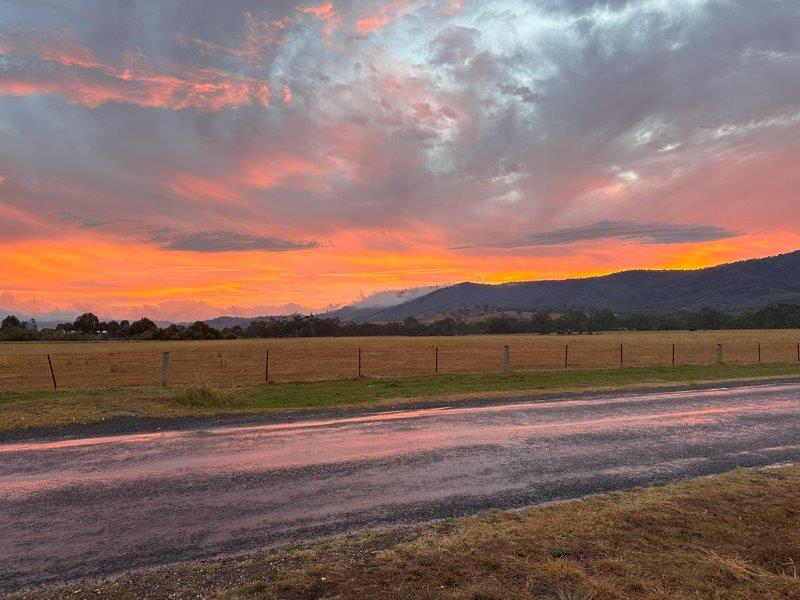
Yarck provided easy access to the Victorian High Country. We did a daytrip to a few lookouts around Yarck. The first lookout over Lake Eildon was Foggs Lookout from Mt Pinninger.
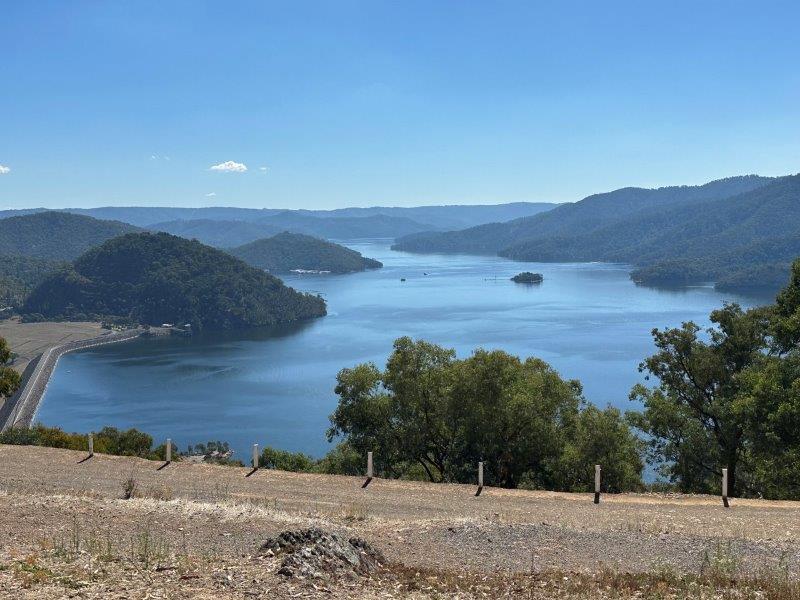
The next stop was Goschnicks Lookout, overlooking Devils River.
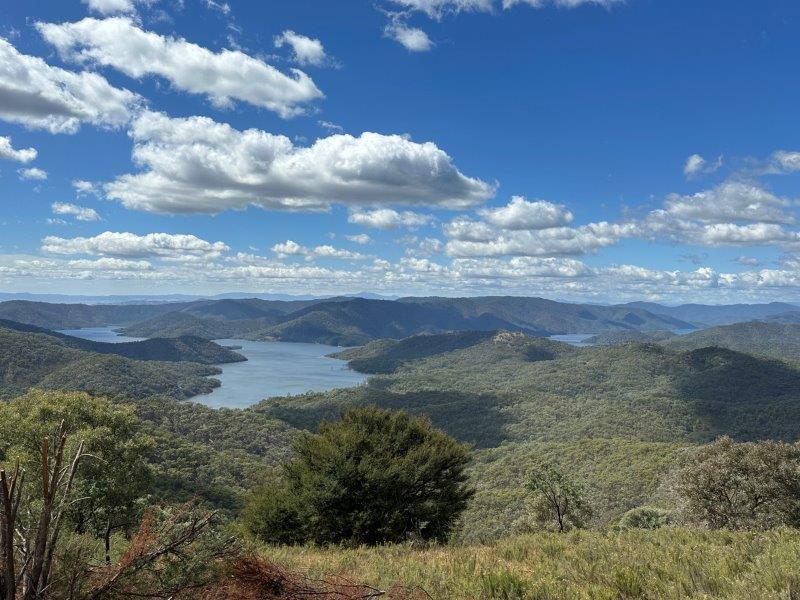
Just down the road is Merlo Lookout which provides a different angle on the Devils River.
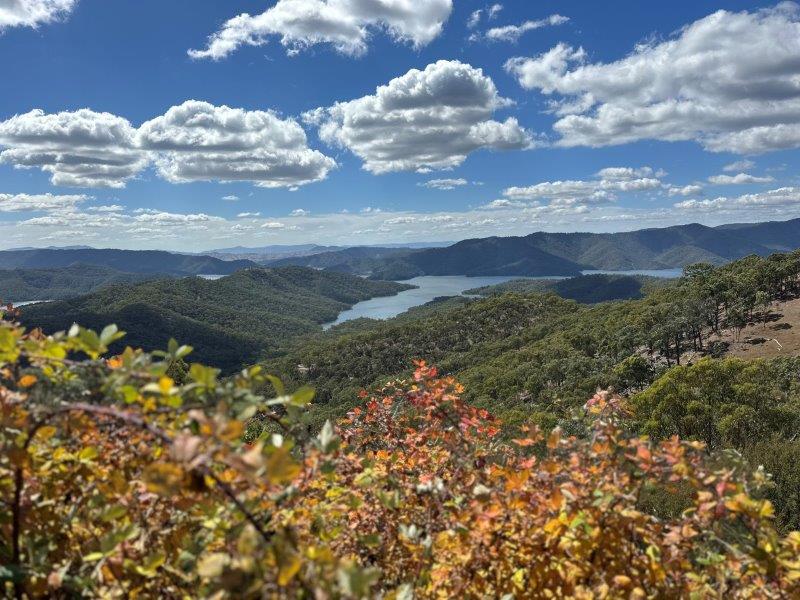
Mansfield is best known for the cop killings at the hands of the Ned Kelly gang at Stringybark Creek in 1878. The three cops were buried in Mansfield cemetery. A monument was erected in the centre of town in memory of the officers.
These killings resulted in a well organised manhunt for the Kelly gang. The gang was protected and supported by many in the community. All gang members, except for Ned, were killed during their failed attempt to derail and ambush a police train at Glenrowan. Despite thousands attending rallies and signing a petition for Ned’s reprieve, he was hanged in the old Melbourne jail in 1880. Ned is associated with his bulletproof suit of amour and his famous last words at the gallows: “Such is Life”.

One of the places in the Victorian High Country I wanted to visit, was Craig’s Hut. I had a photo of this hut in my office and often said, I would like to visit it. This hut was a prop in the 1982 movie, The Man from Snowy River.
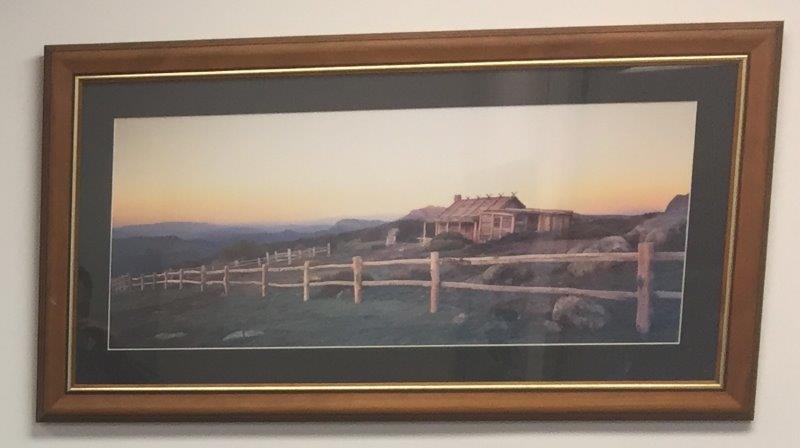
We did not know how remote it was. According to Google it would take one hour and thirteen minutes to travel the last 30 kilometers to the hut. We decided to take the more challenging 4×4 track starting at Mount Buller. This decision added another hour to our travel time.
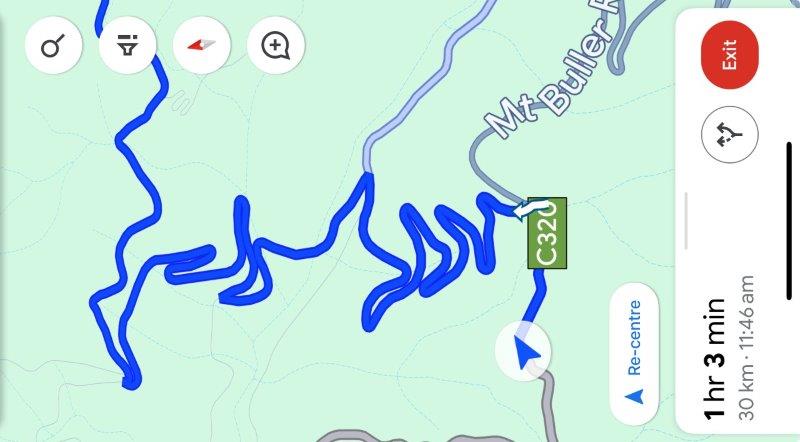
Seeing the old stockman’s hut op top of Mount Stirling, made the track worthwhile.
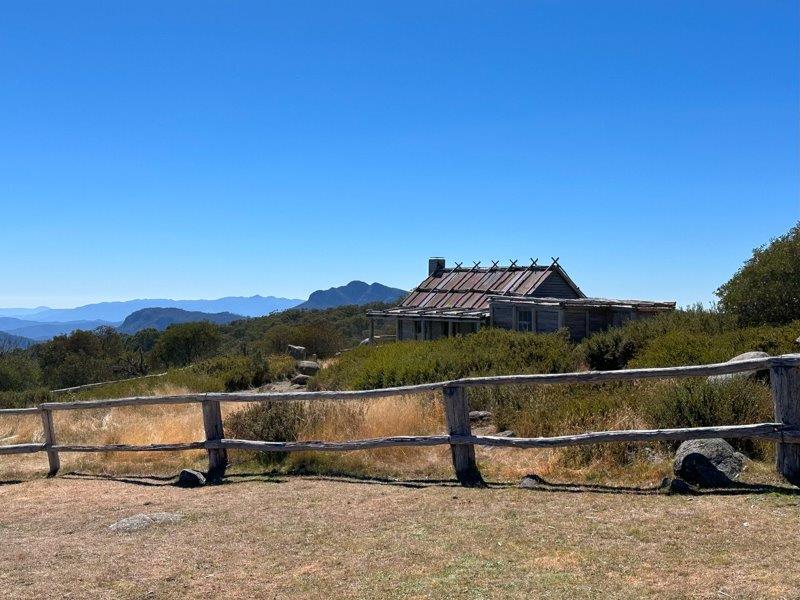
After the 1988 sequel film, the old hut was destroyed in the 2006 bushfires. The hut was rebuilt and reopened to public in January 2008.
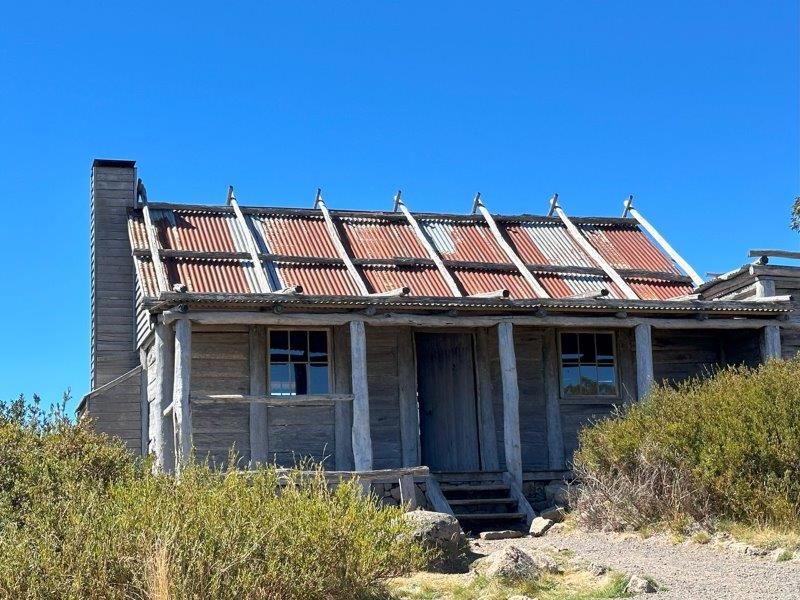
The views from the top of Mount Sterling were magnificent. We had lunch at the hut and spend a good few hours on the mountain.
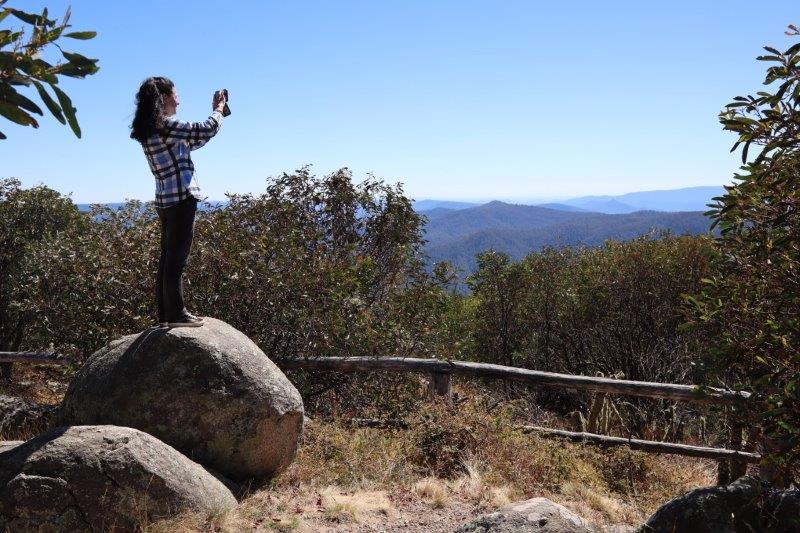
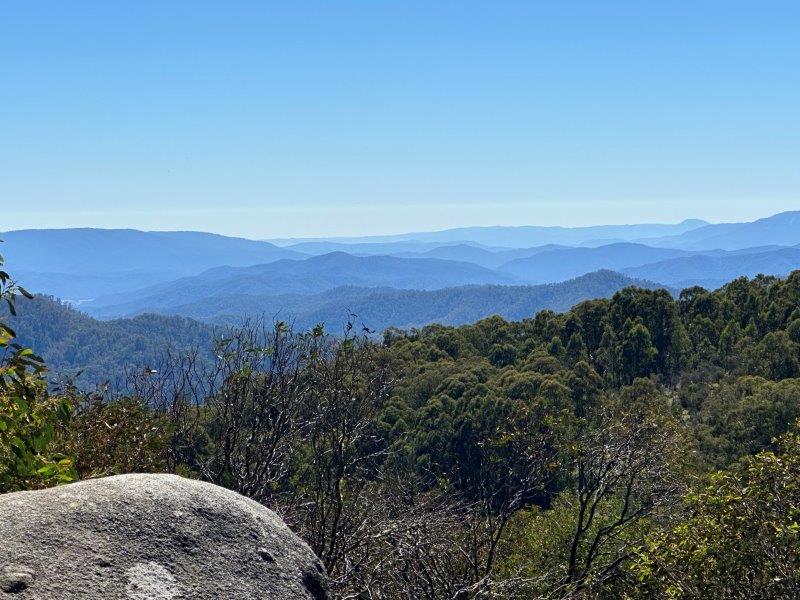
On the way back to Yarck, we stopped at a lake in Bonnie Doon and visited another movie prop. This time it was the holiday house of the Kerrigan family in the 1997 movie “The Castle”. This comedy was about an every day Aussie’s battle with the government in dispute to keep their family home adjacent to the Tullamarine Airport in Melbourne.

After we left Yarck we stopped at The Big Magpie in Euroa. The 3.5m magpie is in Seven Creeks Park. The park has huge picnic areas around the river and facilities where caravanners can fill their water tanks.
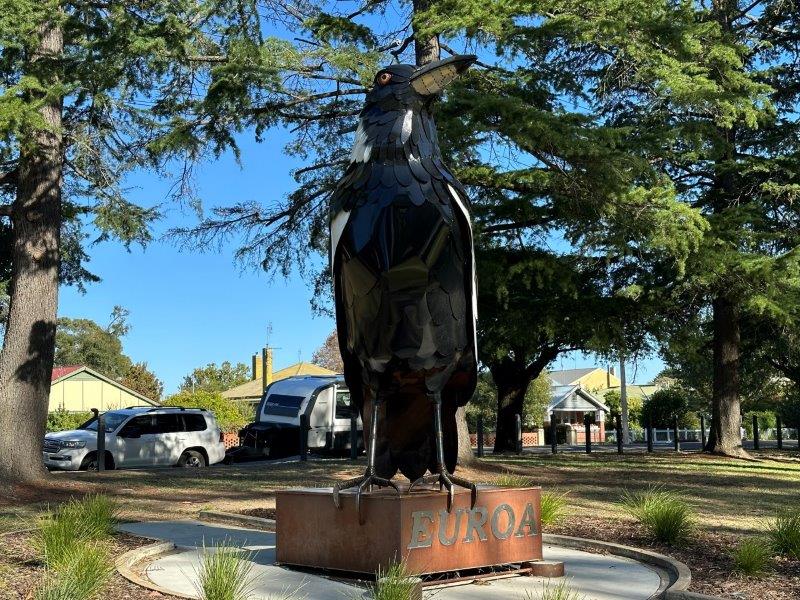
Our next camp was near Shepparton. We spend a day in town and visited the modern art museum, build in 2021.
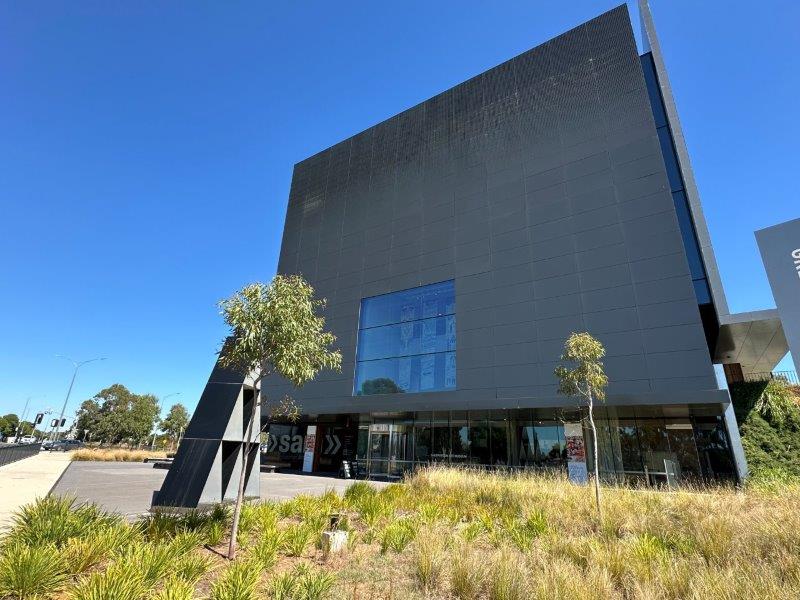
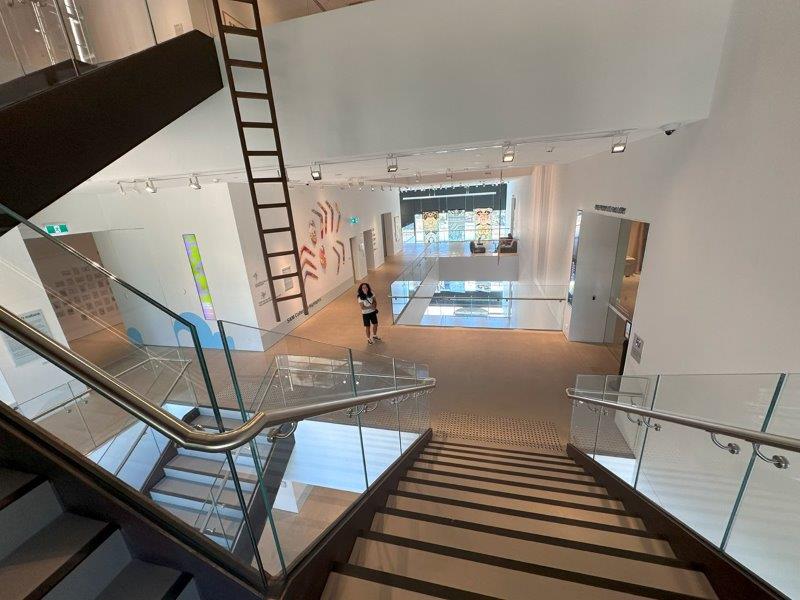
In a creative project by the Shepparton council, the former 30m high landfill was regenerated into botanical gardens.
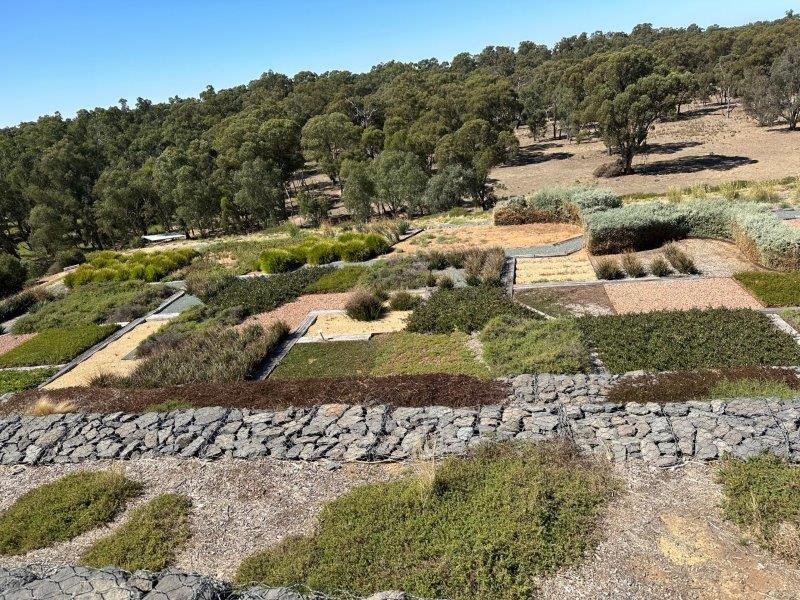
Shepparton is known for the ever-changing public art exhibition called “Moooving Art”. This is a herd of more than 90 cows, painted by established and emerging artists. Although the cows are scattered around the Shepparton area, Monasch Park has the largest herd.
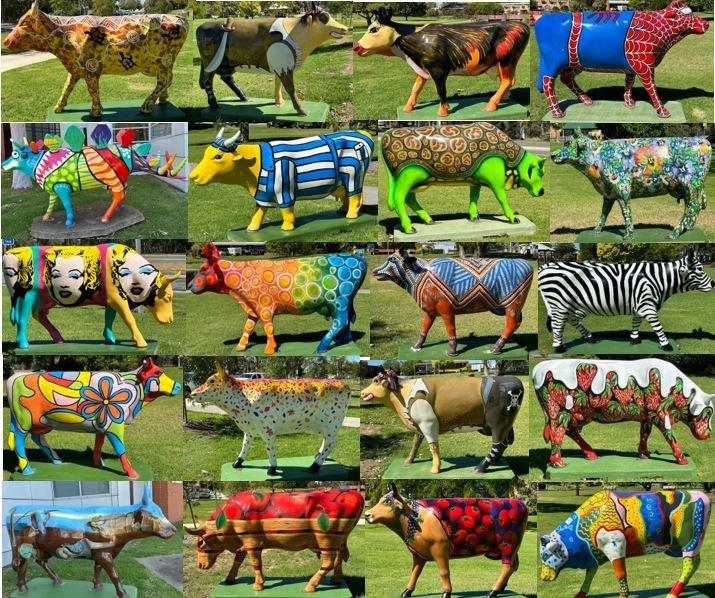
The giant can of Campbell’s Soup is just outside Shepparton. The 10m high can (water tank) is on a 43m stand and stores 275000 litres potable water for the soup factory below it.
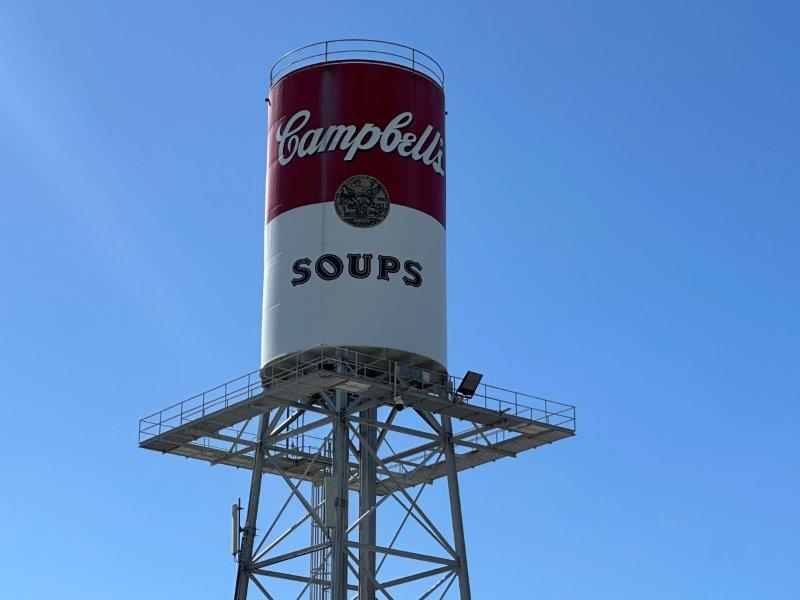
After Shepparton, we travelled to the Murry River, and stayed at a donation camp in Koondrook on the banks of the river. Many of the campsites on the river were inaccessible due to the 2024 floods.
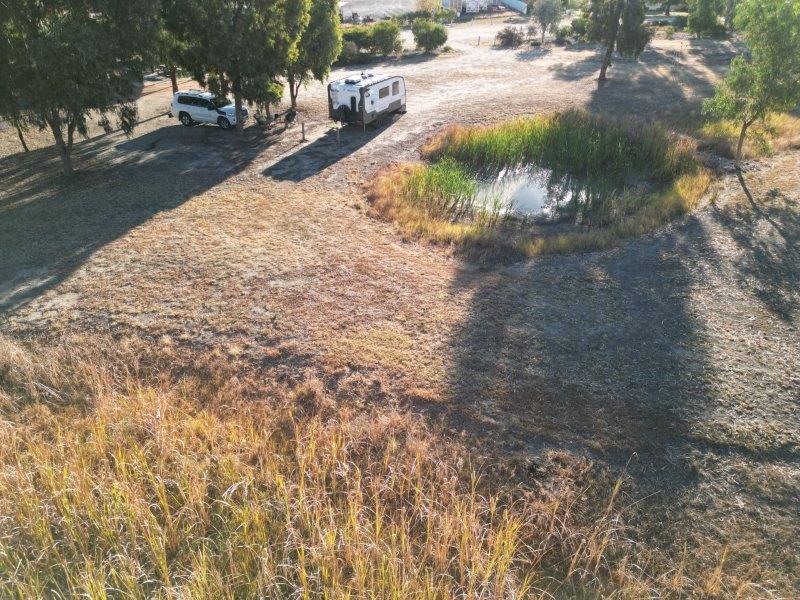
Even though the river was calm with only a few paddle steamers passing by, the carnage of the floods could be seen on the banks of the river.
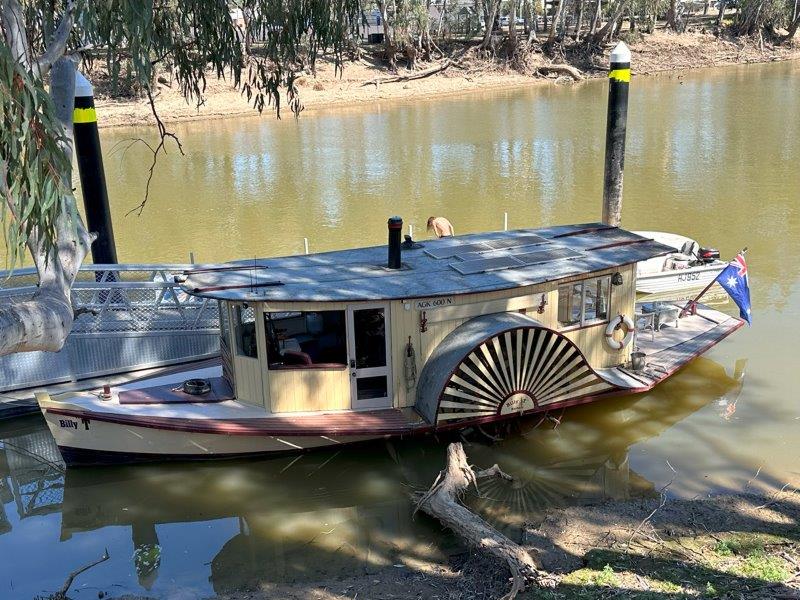
From Koondrook we headed to Victoria’s western border to visit a few salt lakes. On the way we passed the Lake Boga Silo Art. During World War II the community at Lake Boga repaired and serviced flying boats. The Catalina Flying Boat and its pilot Scotty, are depicted on the silo.
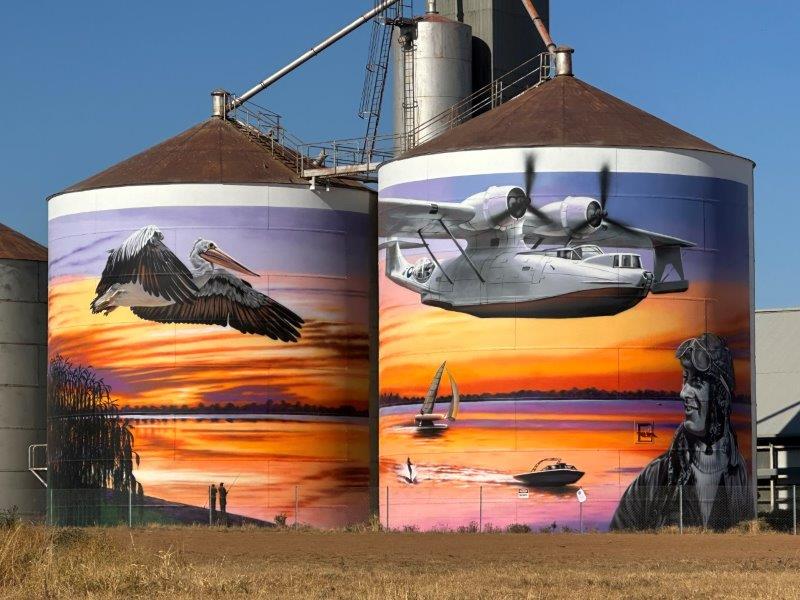
We stopped at the 1876 Paddle Steamer GEM moored at the Pioneer Settlement in Swan Hill. These old side wheel paddle steamers once roamed the Murry River, transporting passengers and cargo.
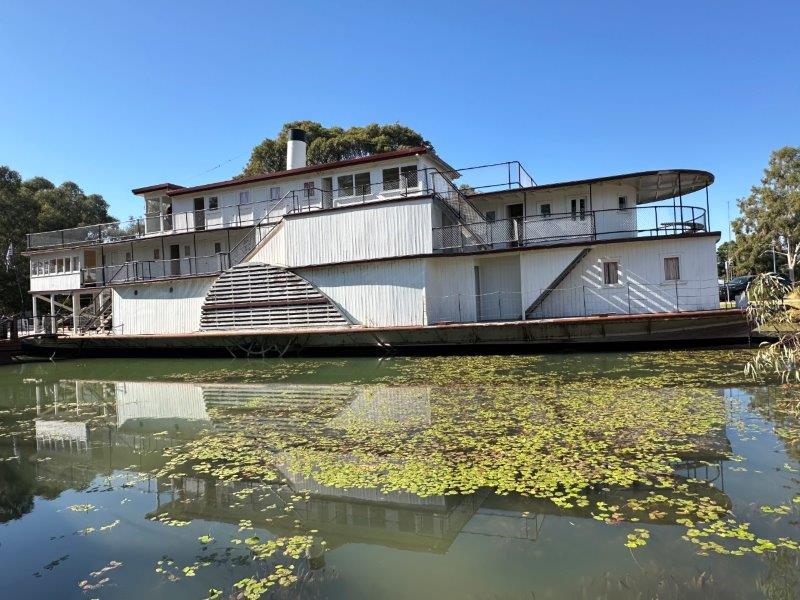
Walpeup Silo Art was close to our next camp at Ouyen. Pictured on the silo is a local boy Harold Thomas Bell who lied about his name, age and origin to join the war at age 16 as a member of the Light Horse Regiment.

Ouyen is a small town in north-west Victoria. We based ourselves here to explore the salt lakes around it. The locals have been canvassing for a recreational lake resulting in this beauty…

This was a great spot for a sundowner and we were surprised at the amount of people around in the play area, enjoying the sunset.
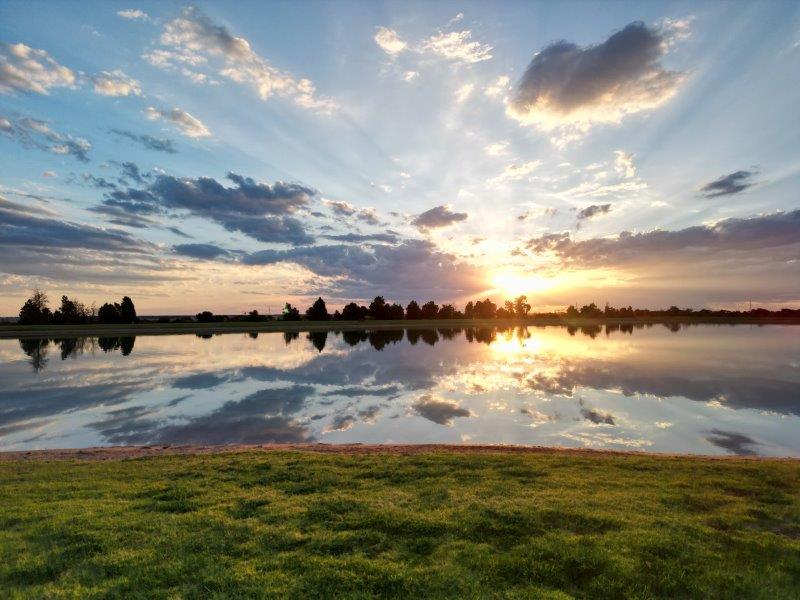
We did a daytrip to see the white salt lakes north of Ouyen. On the way we passed this sign. This farmer was clearly fed up with tourists taking the wrong turn, ending up at his homestead.
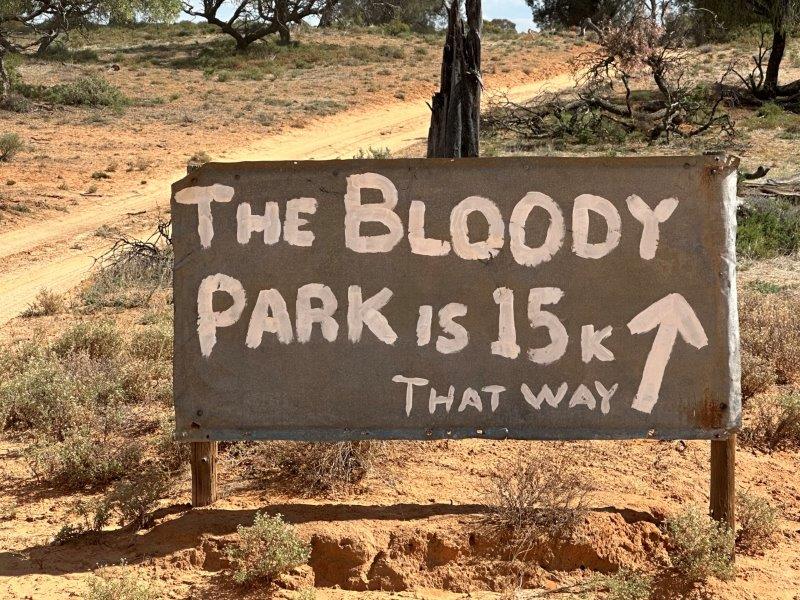
When we got to the “bloody park”, the views were fantastic.
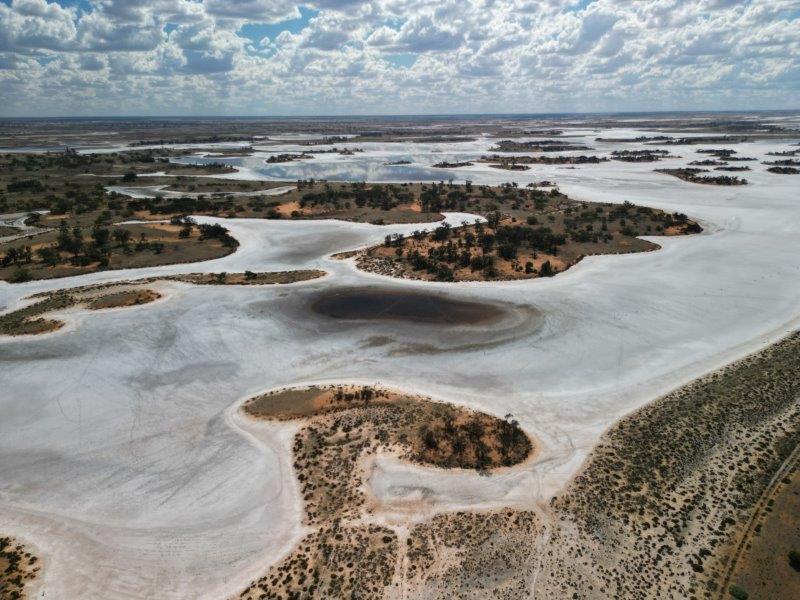
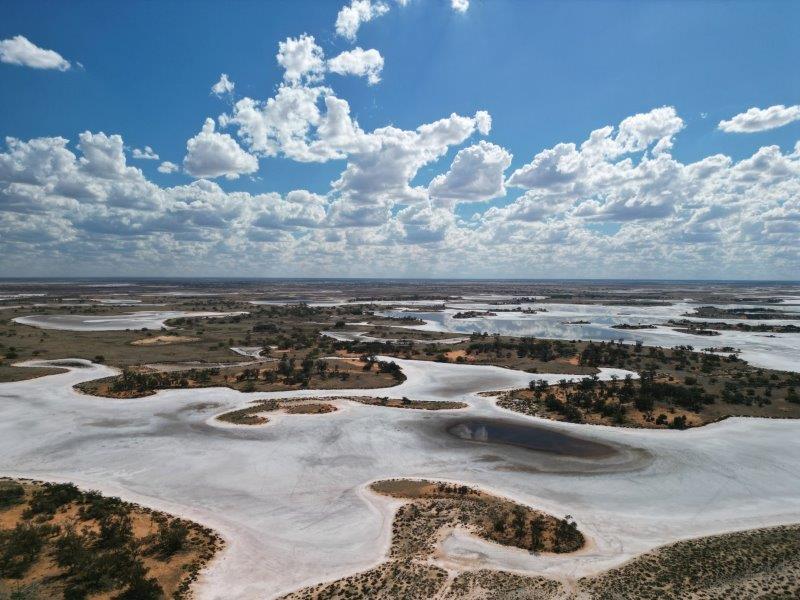
The next day we headed to the Pink Lake in the Murray Sunset National Park.
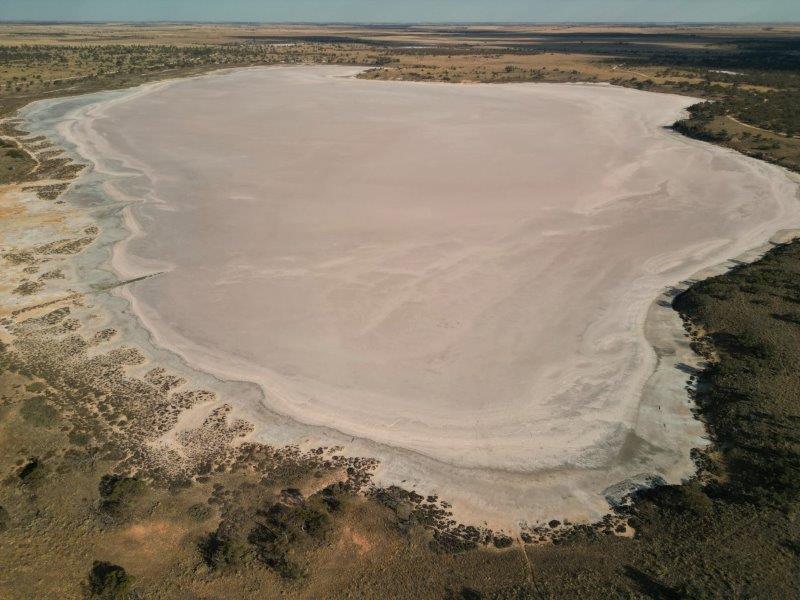
The lake was dry when we visited, resulting in a white rather than a pink lake.
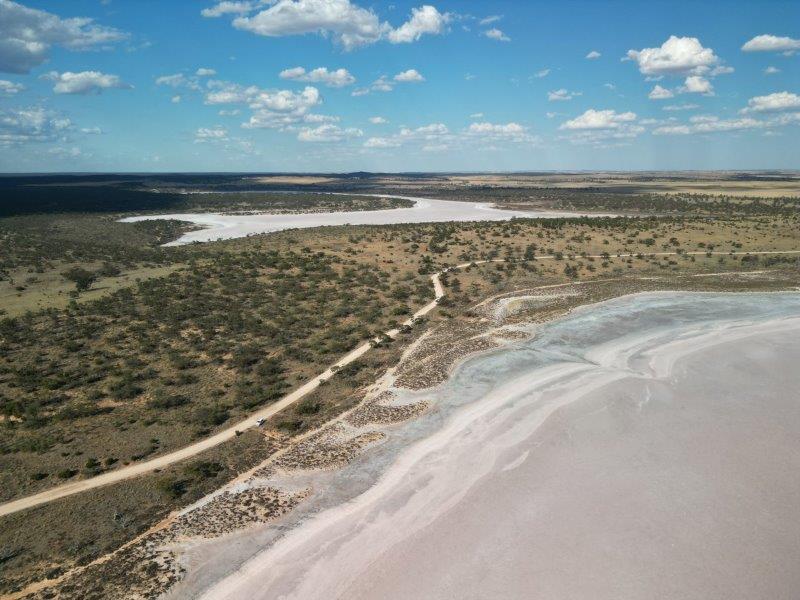
Our last salt lake, was Lake Tyrrell. We headed out early in the morning, in time for a great sunrise.
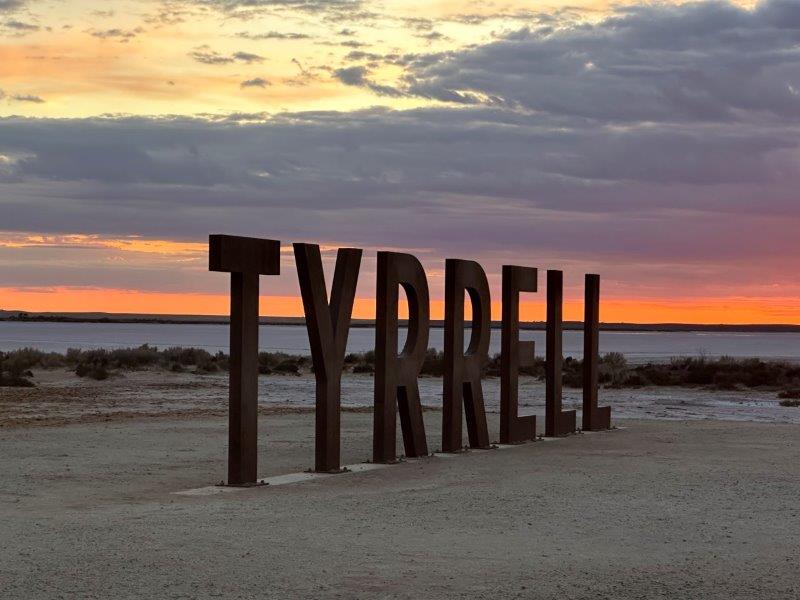
The lake was mostly dry and we could walk on the dry salty crust.
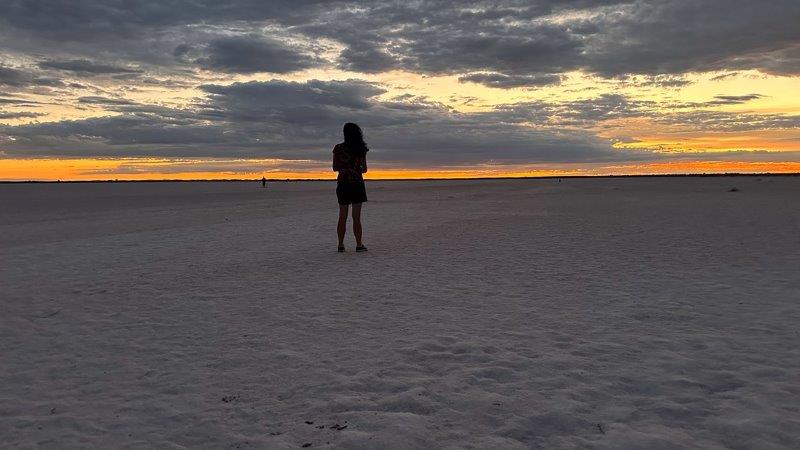
Lake Tyrrell has a viewing area for visitors, with a boardwalk and a sky lounge.
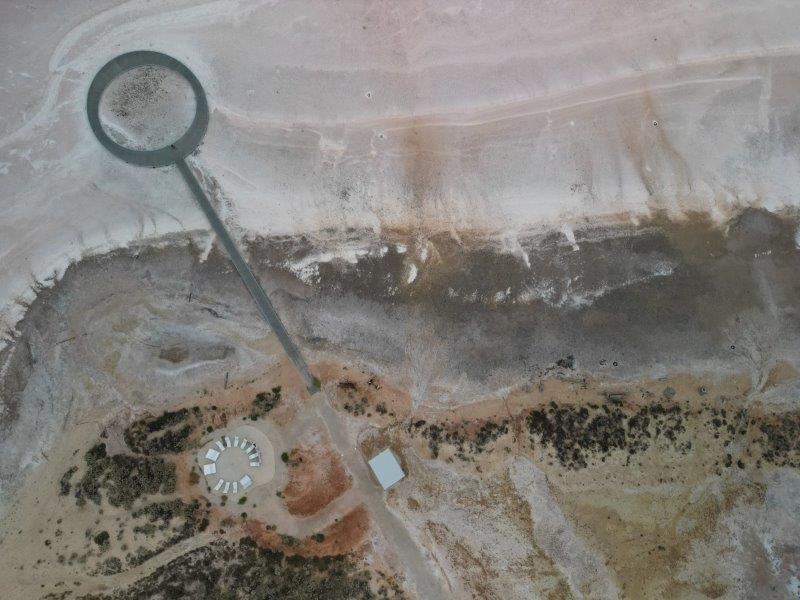
The sky lounge is popular with star gazer and naked eye astronomers.

The boardwalk takes you into the lake. The circular walk is useful to keep your feet dry when the lake has water in it.
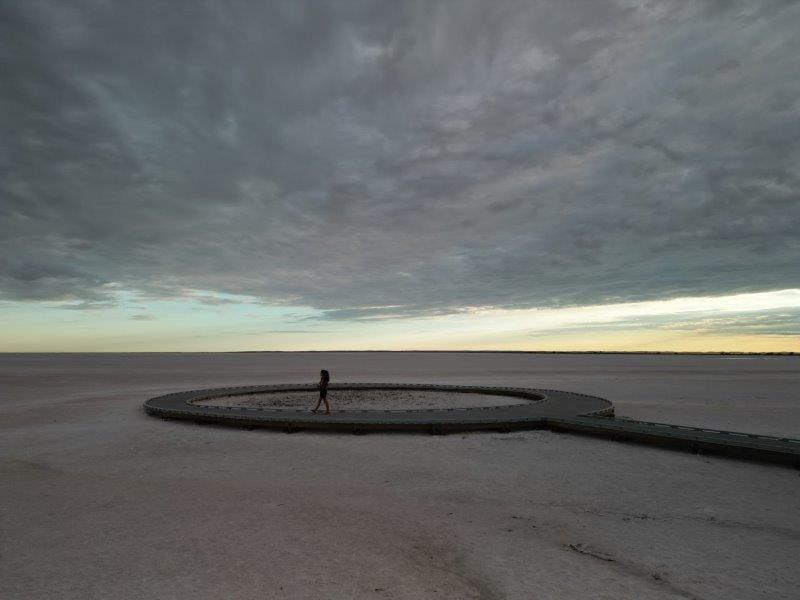
From the viewing area we took the 4×4 track around the lake.
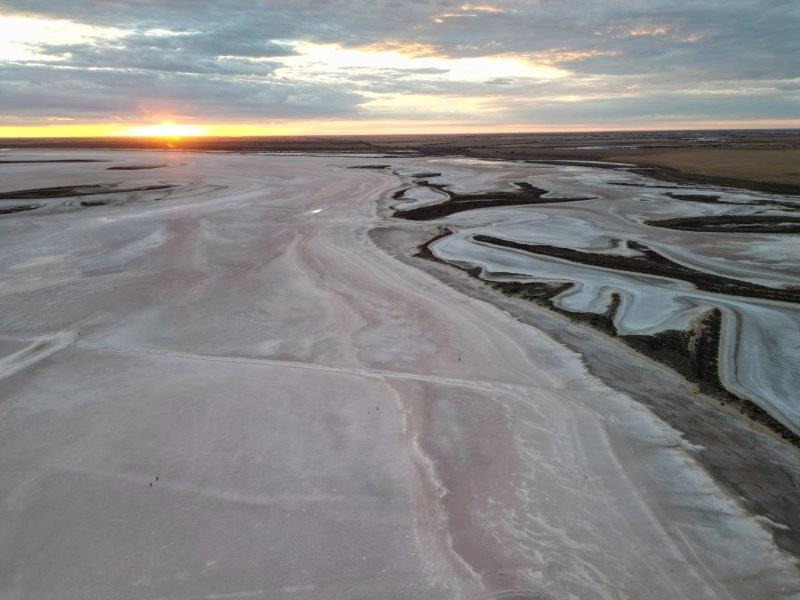
The track was littered with tumble weeds.

The scenic drive around the lake meanders through the local vegetation, including saltbush and samphire.

This concluded the visit to the salt lakes in the north-western corner of Victoria. We left Ouyen and headed south to the Grampians National Park. On the way south, we passed through the little town of Sea Lake. The main street was lined with massive murals.

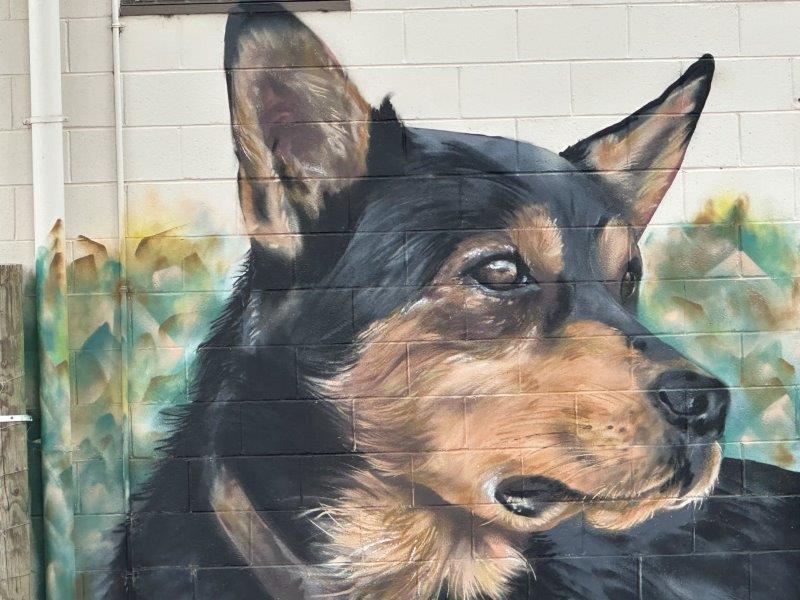
The road south passes through many small towns boasting Silo Art, starting with Sea Lake. These artworks form part of the 700km Silo Art Trail.
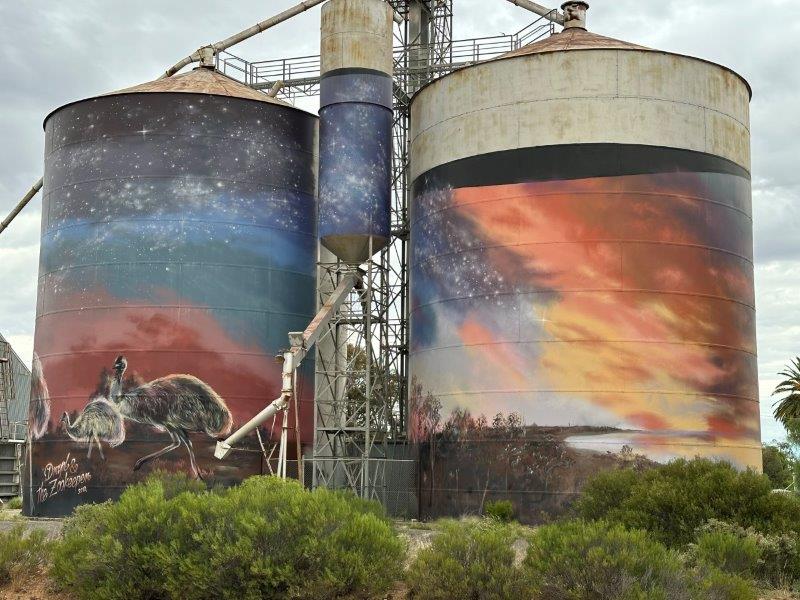
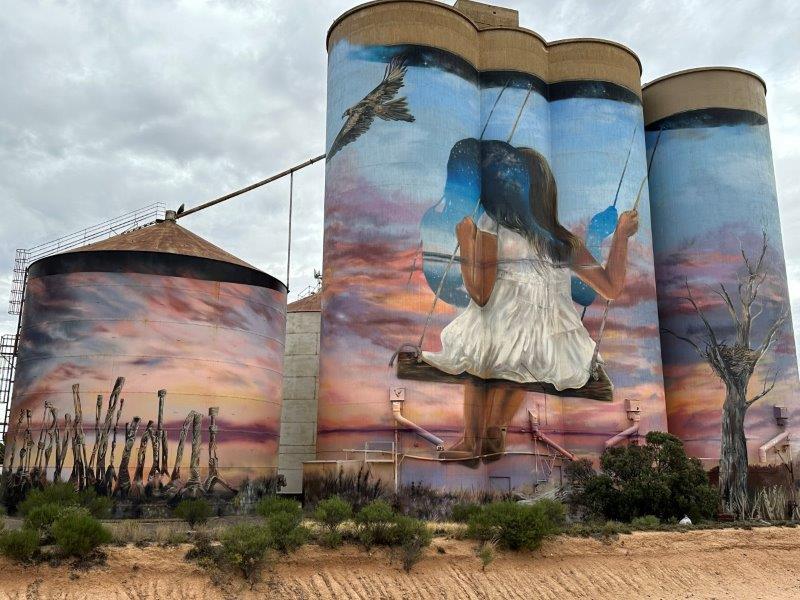
Our next camp was Flat Rock Camp on Lake Lonsdale. We based ourselves at the lake for the next six days. This is a great free camp with large campsites, fire pits and reasonable solar. The main benefit of the camp was its proximity to the Grampians National Park.
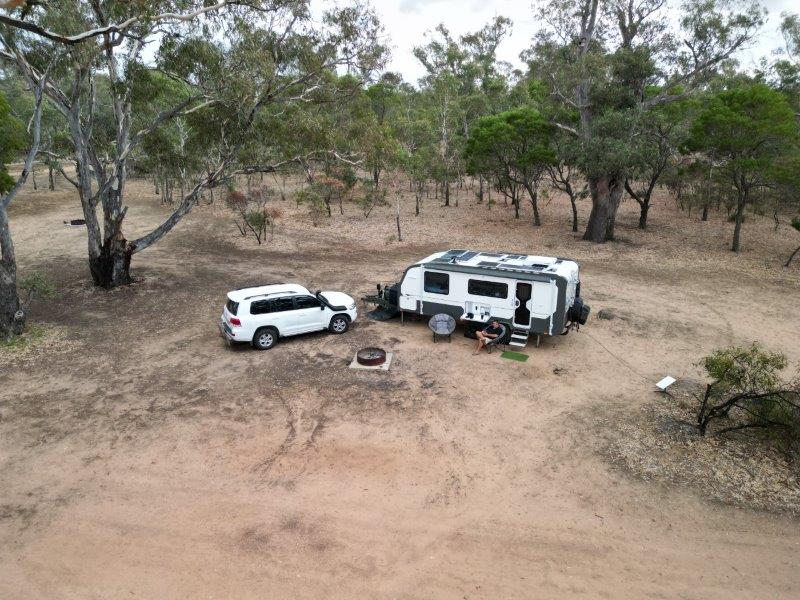
With this backyard in a free camp, it is easy to understand why we stayed six days, and left reluctantly.
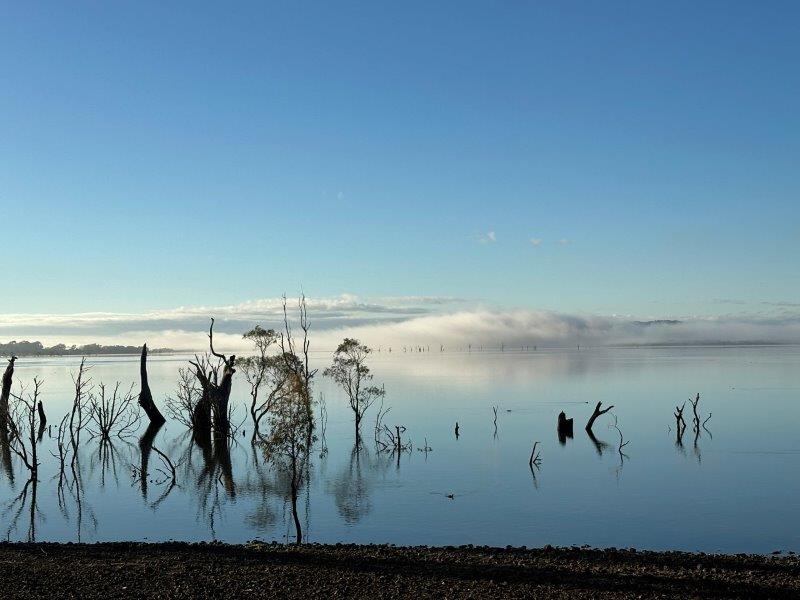

Our neighbour at the camp traveled with a dog. We have never seen a dog so keen to put on his goggles. This dog was ready for dust, wind and even snow:)
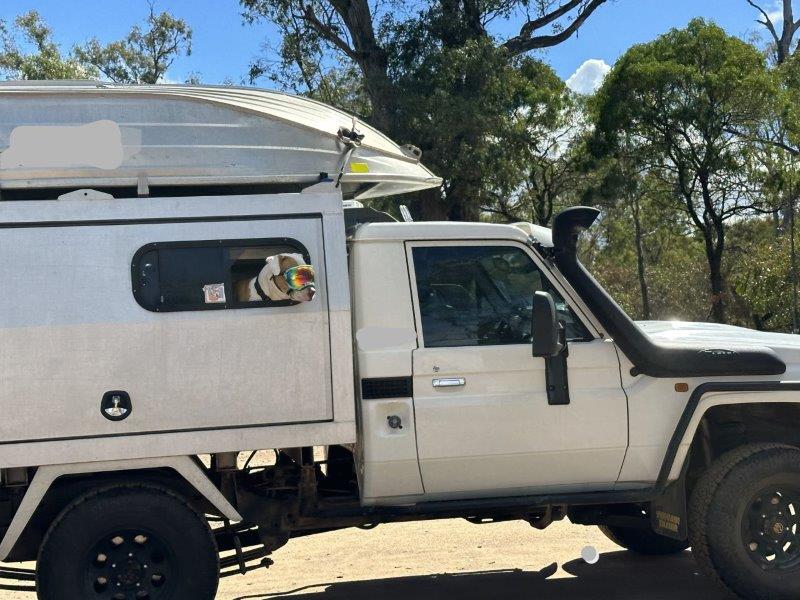
The Grampians National Park is known for its mountain ranges and challenging hikes in the park. At the centre is the small town of Halls Gap from where most walking tracks start. Our first hike in the Grampians was the Pinnacle Lookout walk. From the carpark you scramble straight up the side of the mountain.
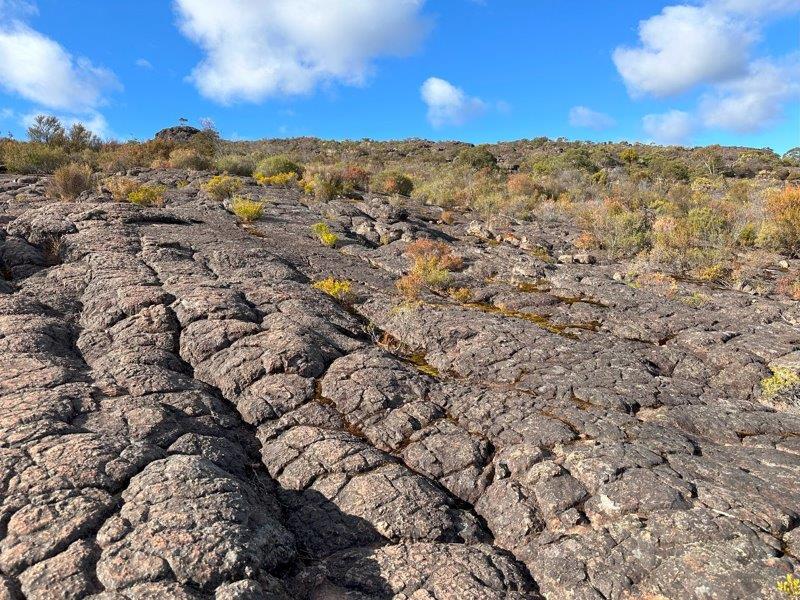
Along the way you are rewarded with great views. The Grand Canyon was first up.
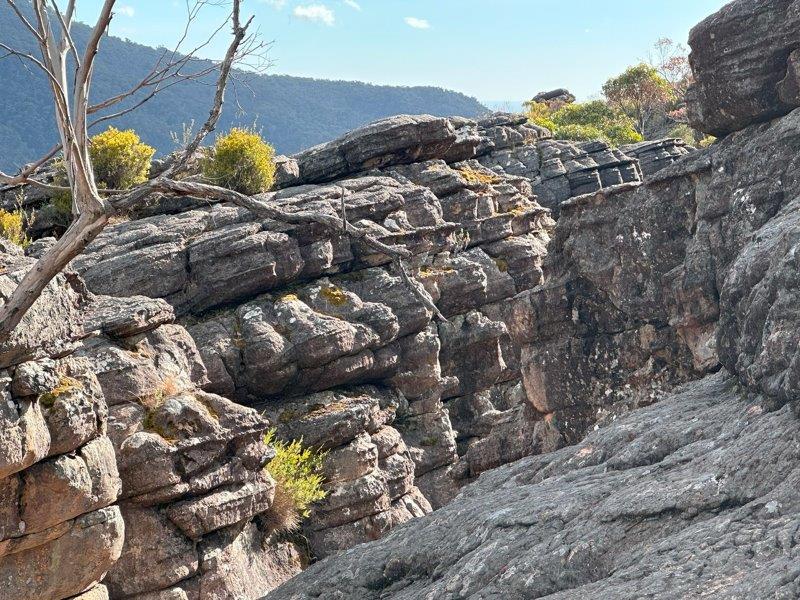
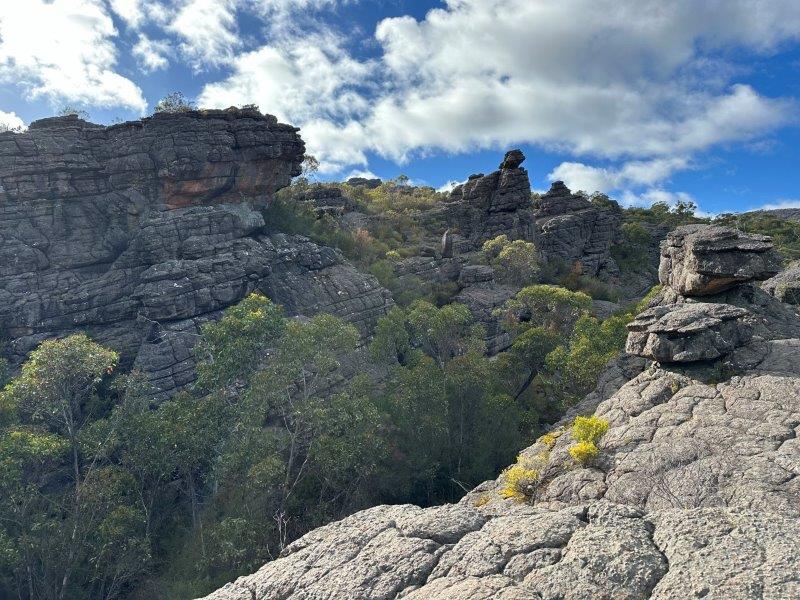
About halfway up we passed the Bridal Falls.
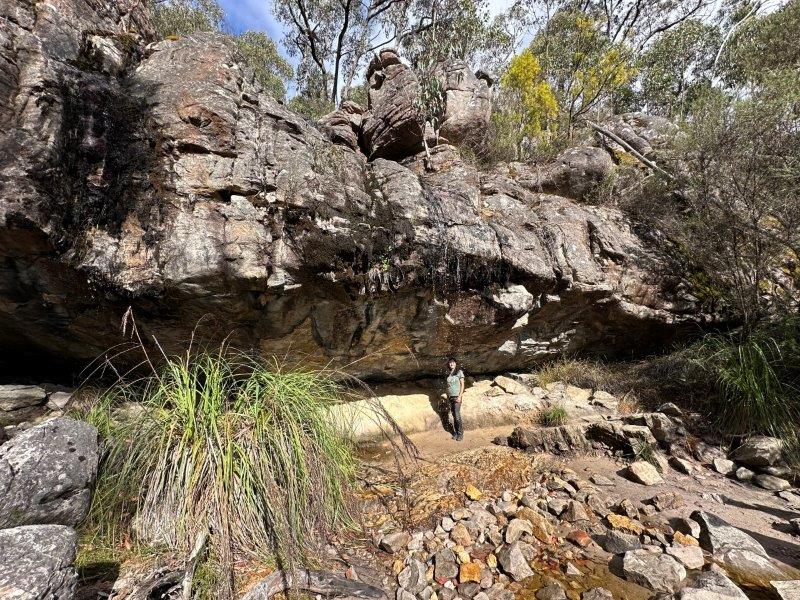
Close to the top, we passed through Silent Street. This narrow passage is absolutely quiet, and has a few hairy narrow bits.

The reward of this hike was the views from the Pinnacle after a 9.6km uphill hike.
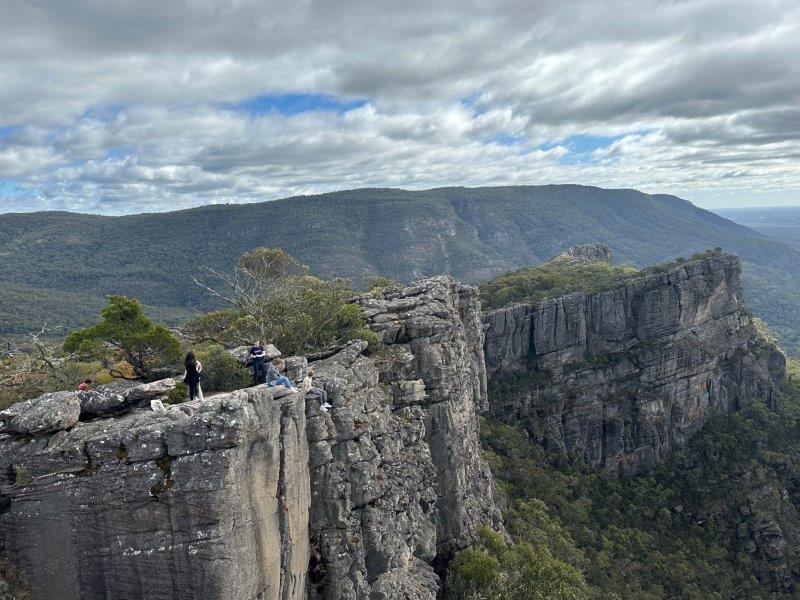
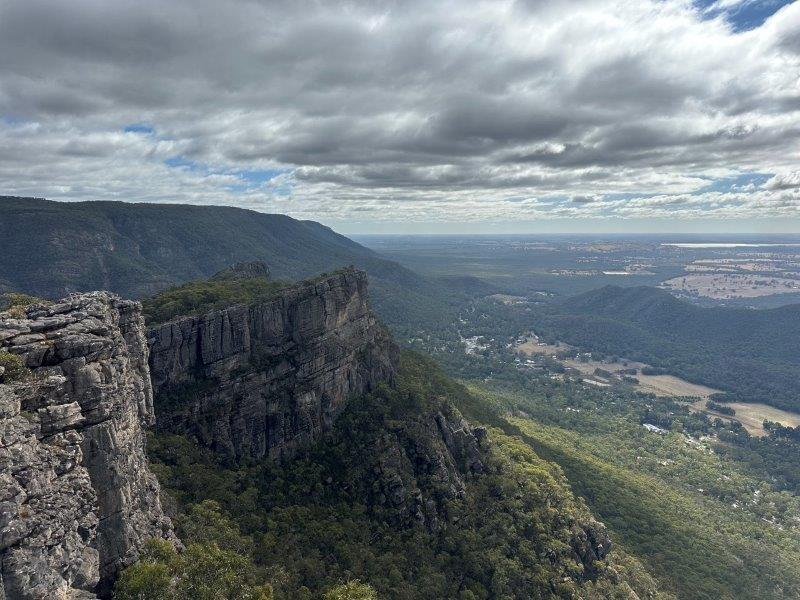
The next day we did two shorter walks. The first walk was Reed Lookout, followed by The Balconies.
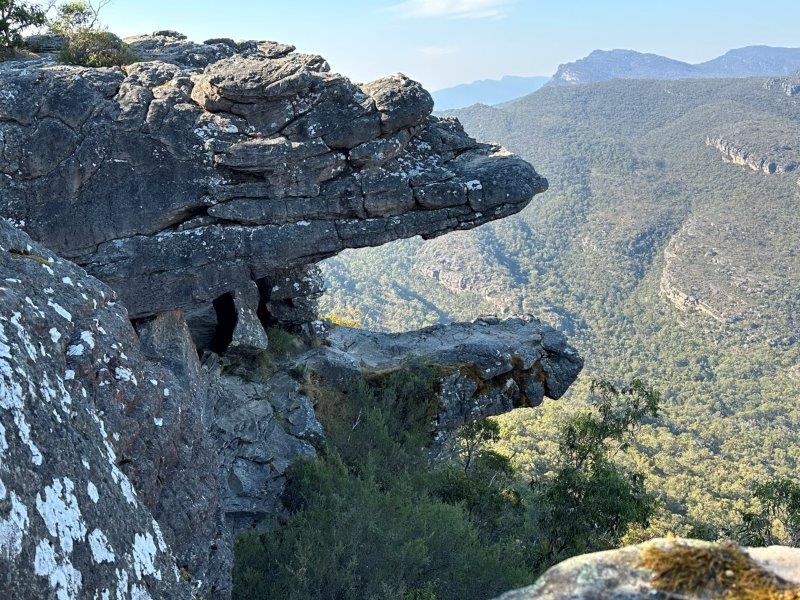
The one hour MacKenzie Base Falls walk takes you to the bottom of the falls where water gushes into a deep pool. This is the largest waterfall in the Grampians.

A short walk from the carpark takes you to the Cranage Lookout.
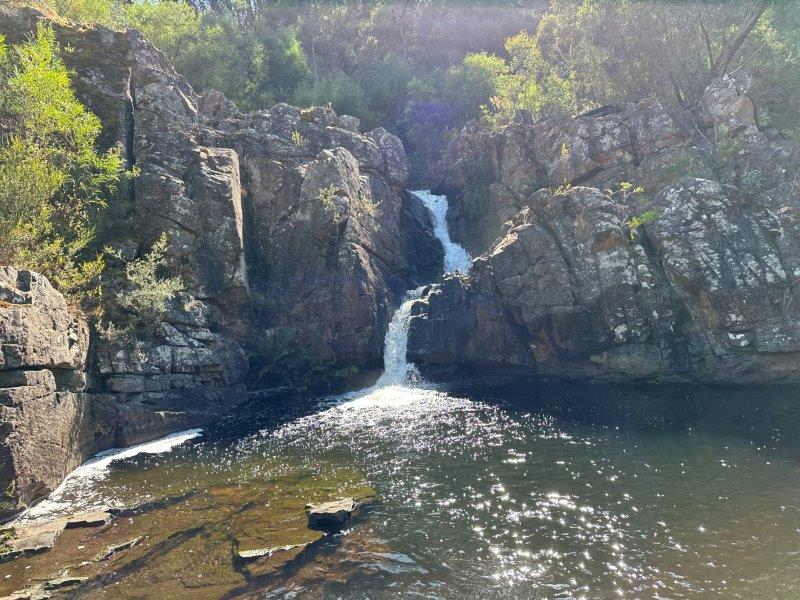
Our last walk in the Grampians was from Halls Creek, through a gorge to Venus Baths.

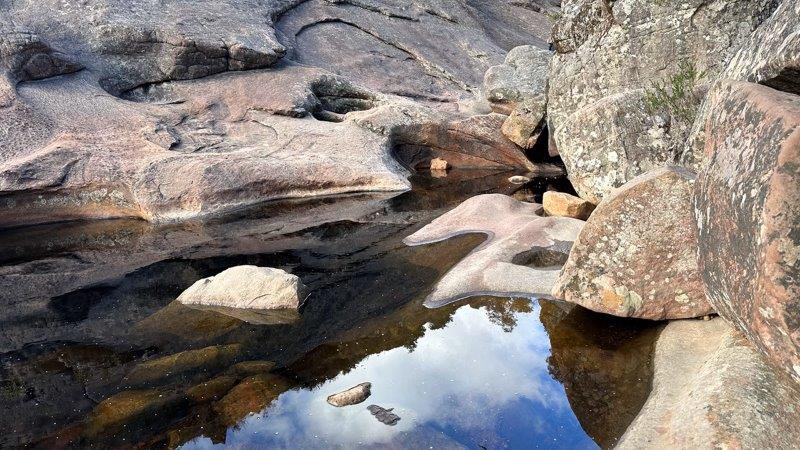
We continued our journey south and passed the Grain Corp Silo Art at Rosebery. The work depict the past, present and future of the region. It depicts the grid, tenacity and character of the young emerging female farmers, working the land.

Just down the road at Sheep Hill, a few of the local indigenous people were painted on the silos. The detail in the pictures, especially the eyes, were incredible.

For us that was the end of the Silo trail as we arrived at Warnambool. We spend a morning in town and explored the coastal area.
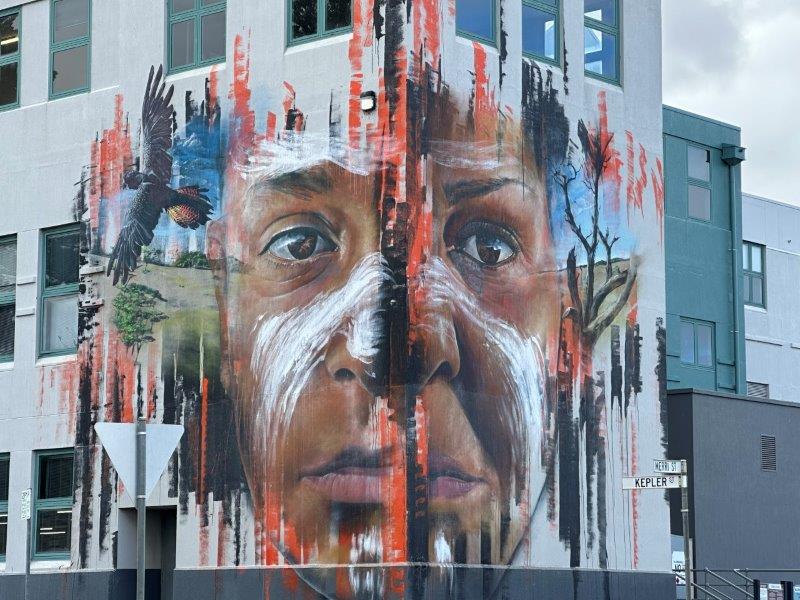
These domes at the wharf caught our attention. The domes covered an underground aquarium opened in the 1970s. Being on the breakwater it got a fresh fill of seawater on high tide. Today, only the domes are left, but still attract many curious tourists.
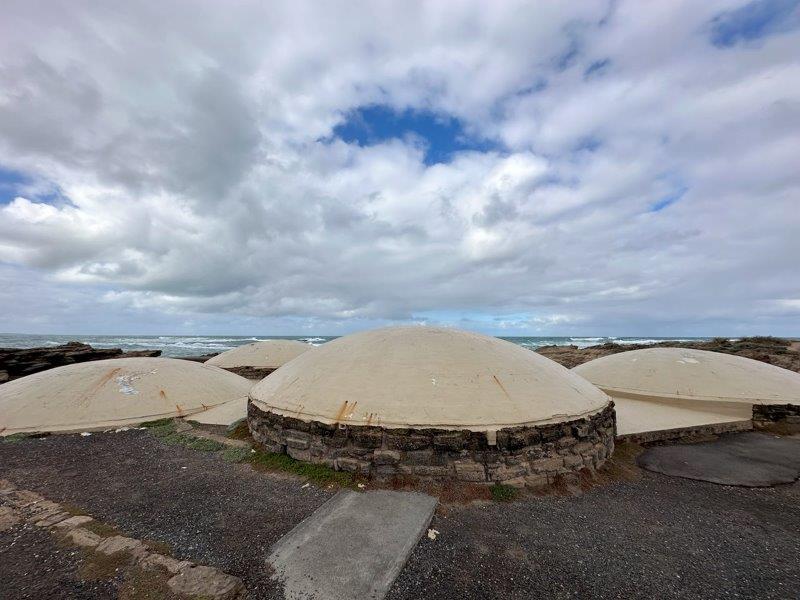
As we were leaving Victoria, it had one final surprise installed. The Tower Hill Wildlife Reserve. This was a volcanic site that created an island in its centre.
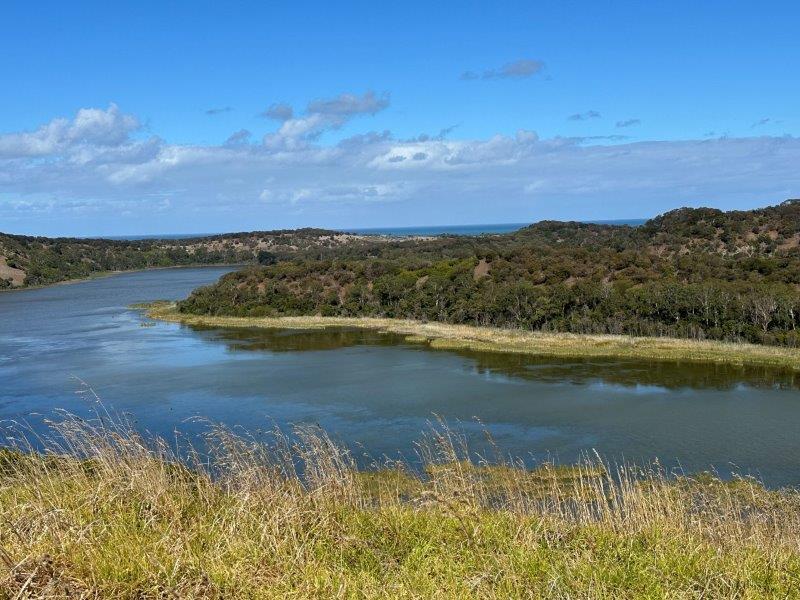
The flora and wildlife populate this island undisturbed from the outside world. We spent three hours in the park and spotted 10 koalas.
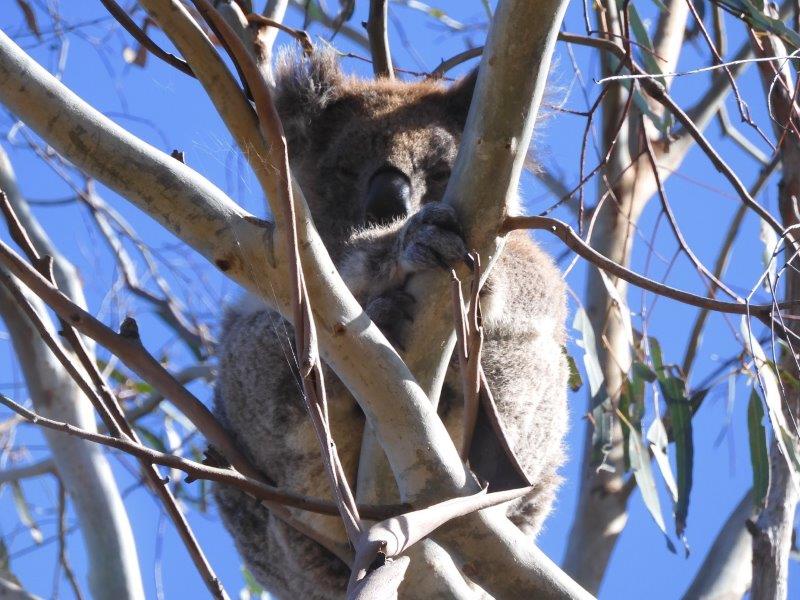
There was even a fox lurking on the perimeter of the picnic area.
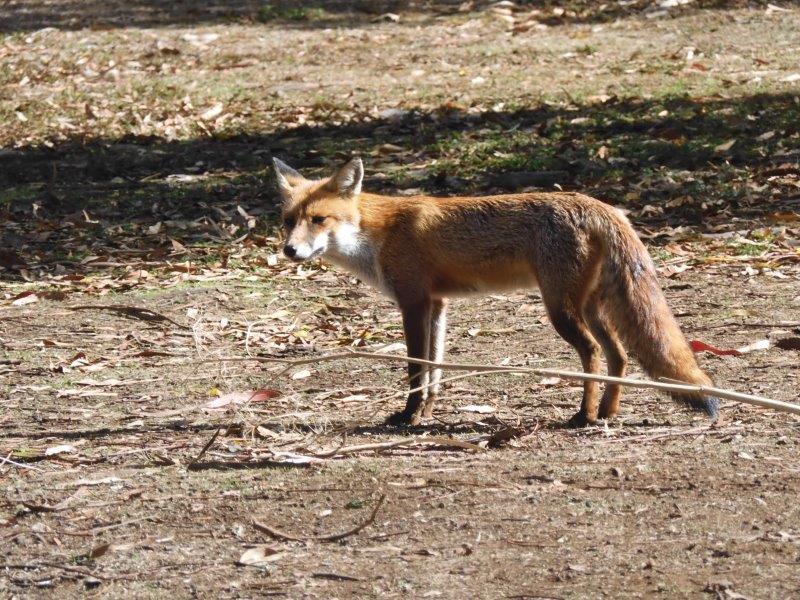
Curious emus were out in force, and they were not scared to come close to the visitors.
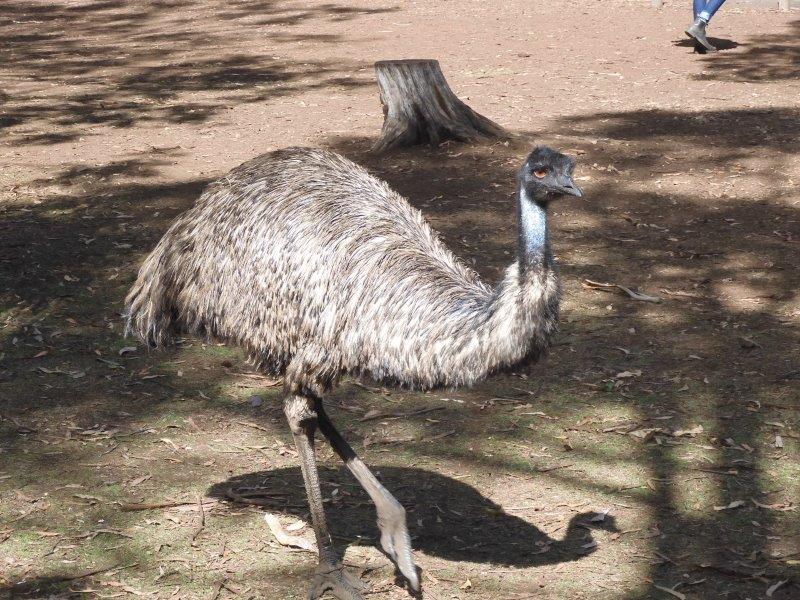
This concluded out Victoria trip as we headed to the South Australia border. We were planning to cross the border at Mount Gambier to explore the Limestone Coast.

